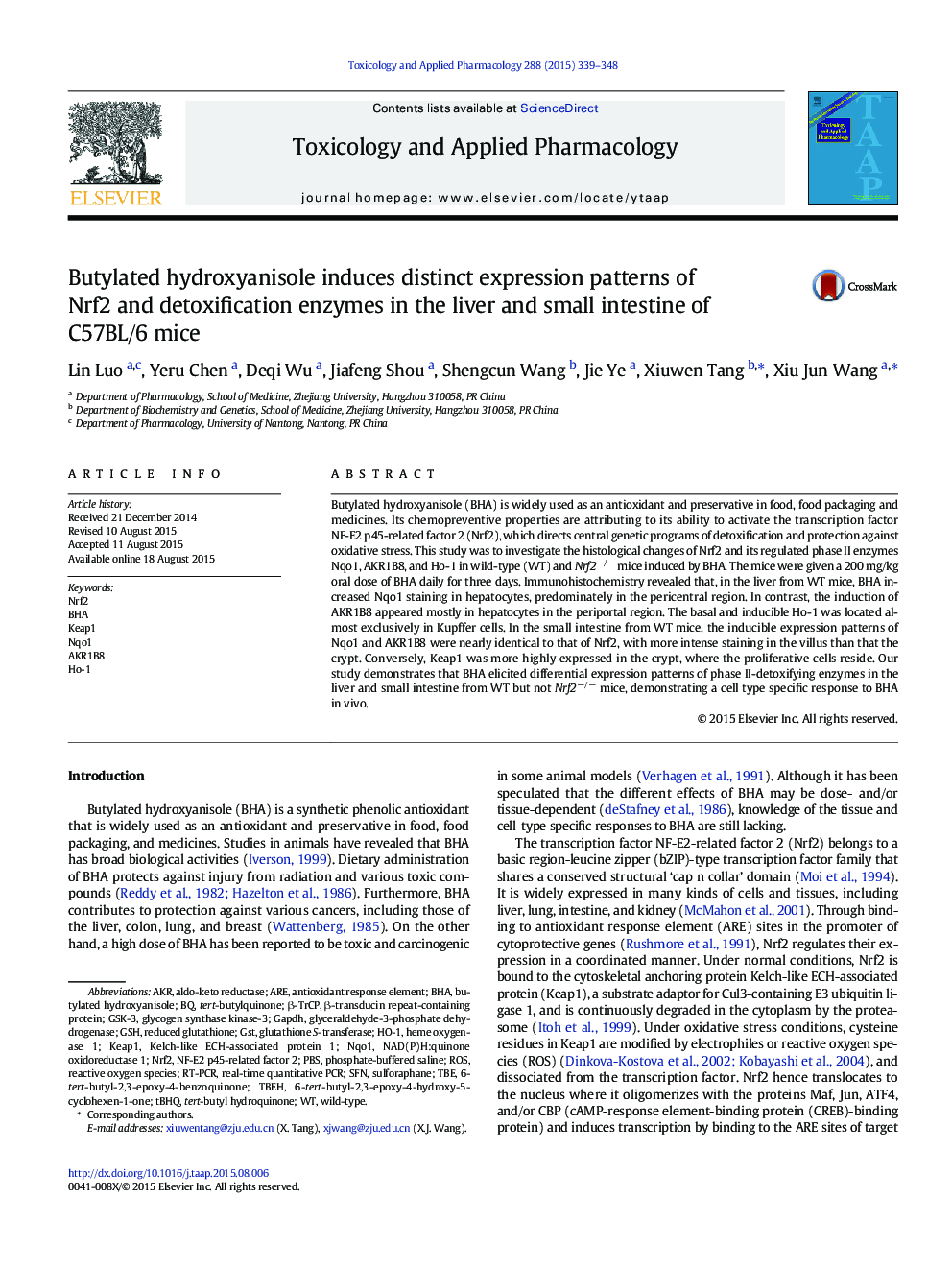| Article ID | Journal | Published Year | Pages | File Type |
|---|---|---|---|---|
| 2568318 | Toxicology and Applied Pharmacology | 2015 | 10 Pages |
•Histological view of basal and inducible Nrf2 and its targets in vivo•Induction of detoxification enzymes by BHA is cell-type dependent.•BHA induces the expression of HO-1 in Kupffer cells.
Butylated hydroxyanisole (BHA) is widely used as an antioxidant and preservative in food, food packaging and medicines. Its chemopreventive properties are attributing to its ability to activate the transcription factor NF-E2 p45-related factor 2 (Nrf2), which directs central genetic programs of detoxification and protection against oxidative stress. This study was to investigate the histological changes of Nrf2 and its regulated phase II enzymes Nqo1, AKR1B8, and Ho-1 in wild-type (WT) and Nrf2−/− mice induced by BHA. The mice were given a 200 mg/kg oral dose of BHA daily for three days. Immunohistochemistry revealed that, in the liver from WT mice, BHA increased Nqo1 staining in hepatocytes, predominately in the pericentral region. In contrast, the induction of AKR1B8 appeared mostly in hepatocytes in the periportal region. The basal and inducible Ho-1 was located almost exclusively in Kupffer cells. In the small intestine from WT mice, the inducible expression patterns of Nqo1 and AKR1B8 were nearly identical to that of Nrf2, with more intense staining in the villus than that the crypt. Conversely, Keap1 was more highly expressed in the crypt, where the proliferative cells reside. Our study demonstrates that BHA elicited differential expression patterns of phase II-detoxifying enzymes in the liver and small intestine from WT but not Nrf2−/− mice, demonstrating a cell type specific response to BHA in vivo.
